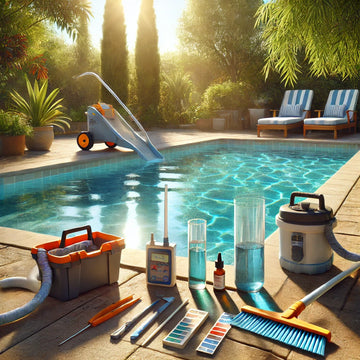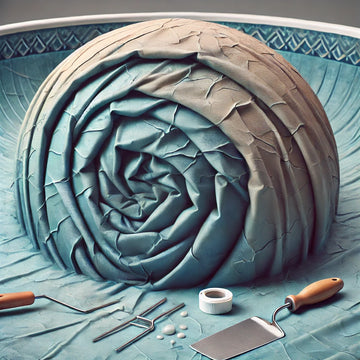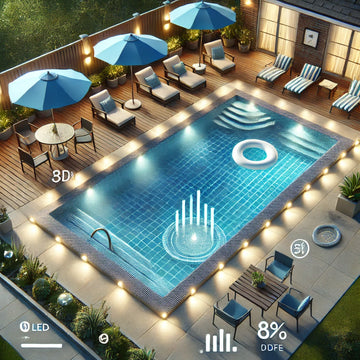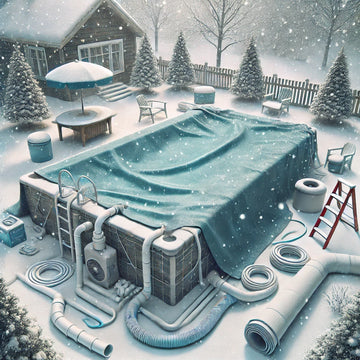And Other Costly Mistakes to Avoid
You did it! You finally took the plunge and invested in a pool. The dreams of summer BBQs, gatherings with family and friends as they do cannonballs into your beautiful new pool have finally arrived. But without proper maintenance, your dreams can turn grungy really quickly.
Read More: COMMON POST WINTER POOL ISSUES AND HOW TO RESOLVE THEM
In this article, we explore the top summer pool maintenance mistakes to avoid so that you can protect your investment and get the best enjoyment out of your pool on those hot summer days.
Pool Maintenance Mistakes and How to Avoid Them
There are a number of mistakes that can lead to serious problems for your pool. We want to help you avoid those mistakes and provide you with a list of the top things to avoid when caring for your investment.
Read More: 6 COMMON MYTHS ABOUT OWNING AN INGROUND POOL
Not Testing Your Pool Water Every Week
The consequences of letting your water go unbalanced for too long can wreak havoc on your pool. Your pH, alkalinity, calcium hardness and sanitizer levels can get way out of whack, which gives contaminants more time to dirty your pool. Test your water at least 2-3 times per week. A test kit is the most accurate way to test the water, but test strips are effective in a pinch. Doing this will help keep chemical adjustments to a minimum, saving your product from running low so quickly. It will also make keeping your pool cleaner far easier. The last thing you want is for your pool to get cloudy or green.
Not Cleaning Pool Filters
Not cleaning your filter regularly means having to contend with a dirtier pool and more wear and tear on your equipment. It puts strain on your pump. The more obvious signs that tell you it is time to clean or replace your filter are abnormal PSI increases, filter cartridges that stay dirty, hard water and contaminants flowing back into the water from the return jets.
Adding Shock Directly to the Pool Water
Shock is a powdery, granule substance, and often, it sinks directly to the bottom of your pool when it is added directly to the water. This method is often ineffective. If shock does not circulate properly into your water, it will not treat your pool properly, over and above potentially causing permanent stains on your pool floor. The best method is to dissolve shock into a 5-gallon bucket of warm water, and then pour the shock into the water. This will ensure that it circulates must faster into your water and will prevent staining.
Not Brushing Your Pool
Just like brushing your teeth is important to avoid buildup, brushing your pool is very important. Little contaminants add up over time and algae can develop on the walls quickly, forming a thin barrier that is invisible to the naked eye. Brush your pool at least once per week to eliminate buildup. This will also help your filtration system as it will not need to work as hard to filter your pool. Brush all areas as well. Stairs, ladders, steps, corners and walls
Using an Automatic Pool Cleaner When You Have Algae
We want you to enjoy more time in the pool. There are pressure side cleaners and robotic cleaners. They both work similarly, and both are great choices. But neither will help fix a green pool. If you want to fix a green pool, here’s what you need to do.
You’ll need to first kill the algea before using any type of vacuum. To do this, start by properly balancing and shocking the pool water.
[su_list icon=”icon: tint” icon_color=”#04cee9″]
- Algae is light green, can see pool bottom: 2 shocks
- Algae is deep green, can’t see pool bottom: 4 shocks
- Algae is black: 6 shocks
[/su_list]
Each shock must be done separately. In most cases, shocking your pool and balancing the water will kill the algae by turning it grey instead of green. Once the algae is dead, you can then begin to vacuum your pool, drain, sand filter, pool bottom, and any other remaining dead algae that looks small. Use a manual vacuum or suction side cleaner. Either one can connect directly to your skimmer, which leads to your filter. Your pool filter is far more effective at cleaning algae than a mesh bag.
It is recommended to vacuum and clean the cartridge and filter multiple times until the pool is completly clear. If your pool is cloudy, you can use a clarifying solution and follow the directions on the bottle to bring the water black to a normal, clear state.
Not Maintaining Your Saltwater Pool
Saltwater pool filters and systems need to be kept clean and your water needs to be turned over once a day. Clear the skimmer, empty the pump basket and skim debris. Test your pool’s pH and chlorine levels. Ensure your salt cell generator is adjusted.
Ignoring pH levels and Alkalinity Levels
Ignoring pH and Alkalinity levels prevents your sanitizer from doing what it’s meant to. High pH levels mean chlorine does not work effectively, leading to the need for additional chlorine. That is wasteful. Balancing your water and adjusting alkalinity first, stabilizes your pH, saving you time and making balancing other chemicals much easier.
Backwashing Your Pool in the Daytime
Add chlorine at night. Make small adjustments during the day. It’s as simple as that. When you give chlorine a chance to fully circulate through your water overnight, it lasts longer and works more effectively.
Not Running Your Pool Filter Long Enough
You should be running your pool filter for a minimum of 8 hours every day. Your water needs 1-2 full cycles for all of it to run through your filter. Not running your filter pump long enough can create more problems than it solves, such as poor water flow and increased contaminants.
The exact time will vary depending on the pool size, pump HP, and size of plumbing pipes, but generally speaking, for a residential pool, you’ll want to filter your pool water at least once and for a commercial pool, at least four cycles.
Neglecting the Water Level
You could do all of the above to maintain your pool, but if you do not maintain your water level, it can lead to significant damage to your pumps, are exposed to air in this case. The repairs can be expensive. Checking your water level at least once a month can help you avoid this problem, so be sure to make it part of your pool maintenance routine.
Read More: DON’T FORGET TO LEAVE WATER IN YOUR POOL THIS WINTER
Read More: COMMON POST WINTER POOL ISSUES AND HOW TO RESOLVE THEM
Minimize Maintenance Time, Maximize Fun Time
Having a new pool and handling maintenance yourself can be a learning curve, but educating yourself on the mistakes that can lead to problems will help you get more enjoyment out of your pool for years to come. Establishing good maintenance habits from the get-go is essential to protecting your investment. For additional tips and supplies, your local pool professional can help you answer all of the questions you may have to ensure that your summer is spent in the water and not on the sidelines.




